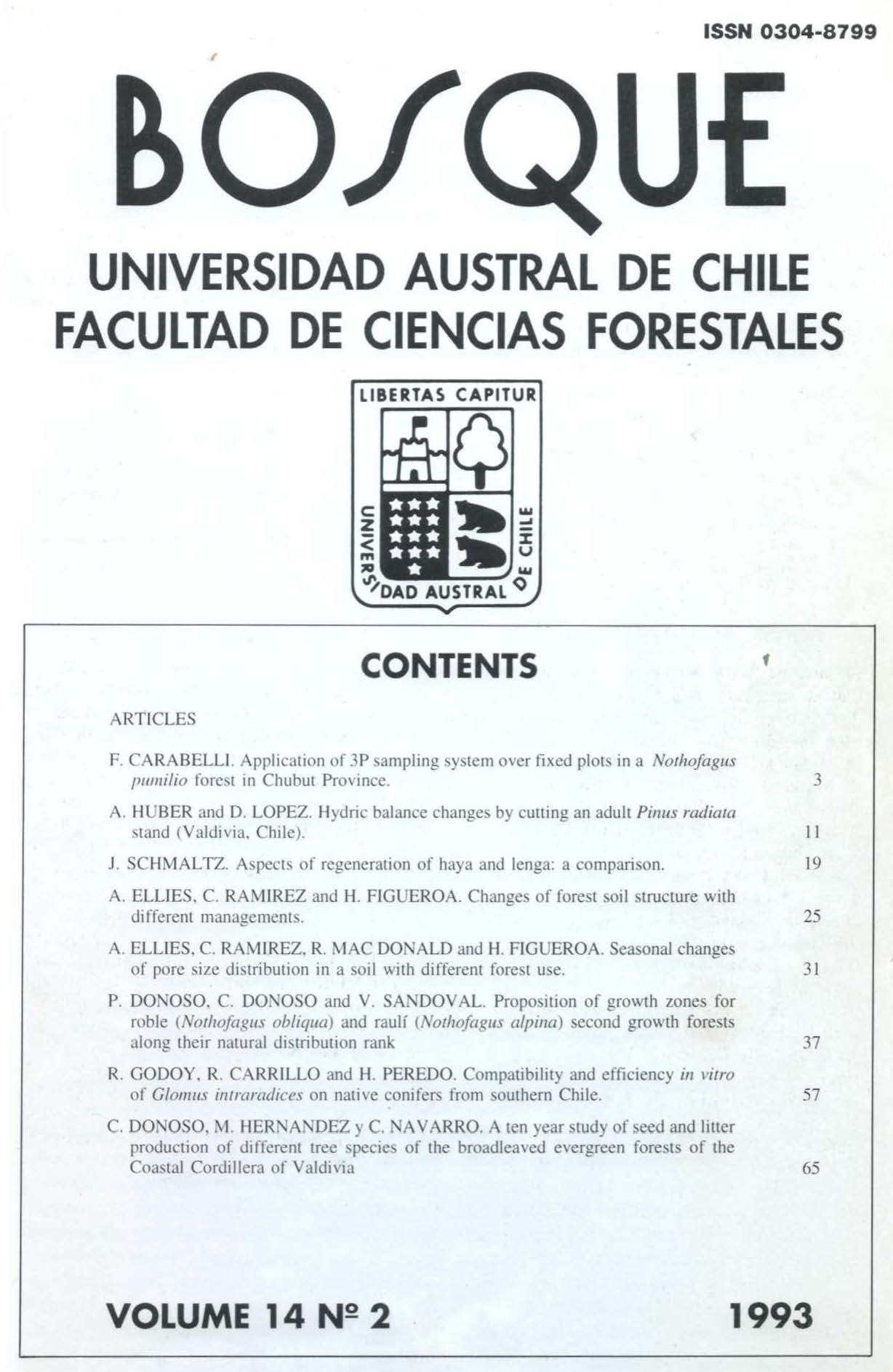Compatibility and efficiency in vitro of Glomus intraradices on native conifers from Southern Chile
Main Article Content
Abstract
The forest communities in southern Chile present a mycorrhizal vesicular-arbuscular dominance which has been documented in most wood plants of silvicultural interest, particularly in the endemic conifers.
This research listed the compatibility and efficiency of vesicular-arbuscular mycorrhiza in four conifer species, representative of native forest communities.
A controlled inoculation greenhouse essay with Glomus intraradices was performed in: Fitzroya cupressoides, Podocarpus nubigena, Podocarpus saligna and Saxe-gothaea conspicua. At the end of the essay (20 weeks), the mycorrhizal colonization degree and morphometric parameters were measured by means of the quality index of seedlings to determine the efficiency of simbiont fungi.
The results presented here confirm a high compatibility and a strong mycorrhizal colonization degree with the endosimbiont. The values show a specificity in the four conifers species and great mycorrhizal dependency.
The statistical analyses of the morphometric variables indicate that these were significantly higher than the control.
The results show that the morphometric variables of the stem are good indicators of the quality of seedlings. The quality index of each conifer species was higher in the treatment than in the control plants.
This data allows us to propose plant mycorrhization as a good alternative to future forestation programs.

